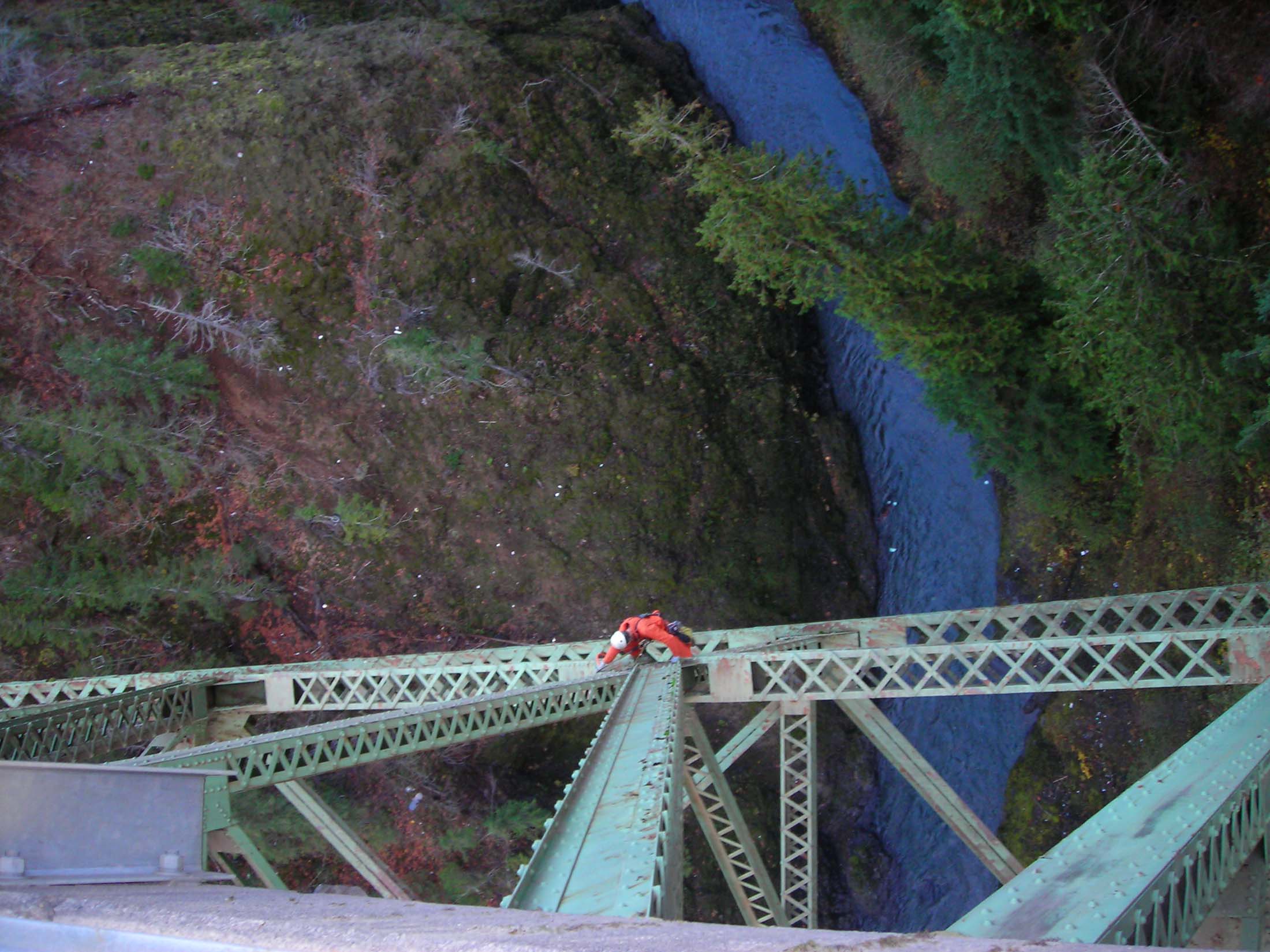Fracture Critical Arch Truss Inspection
This bridge is one of the coolest arch trusses in the Northwest. It is a 686' long steel bridge, comprised of three 64' steel girder approach spans on the south end, a 366' steel deck arch truss main span, and two 64' steel girder approach spans on the north end. The bridge is over 270' above the streambed. It was originally constructed as a railroad bridge in 1929. In the early 1950ís it was converted to a log truck bridge by removing the rail bed and installing a timber deck. In 1963 the timber deck was removed and replaced with a concrete deck.

Technical climbing access was used to perform much of this inspection, enabling the inspectors to have hands-on access to all fracture critical members of the bridge. This method of access also enabled the inspection to proceed with no road or lane closures and without the added cost of traffic control.

All components were checked to see that loads were being evenly distributed between them (by attempting to vibrate members by hand or with a hammer) and that batten plates / lacing bars were tight. Members were checked for nicks, gouges, and tears due to impact. Tack welding, used either during construction or during repairs, was carefully observed as a source of future cracks. Members were checked for repair welds, plug welded holes, and for fatigue cracks at welded locations. Inspection techniques included the use of magnification, head lamps, cleaning, sounding, and where necessary, testing with a magnetic particle tester.